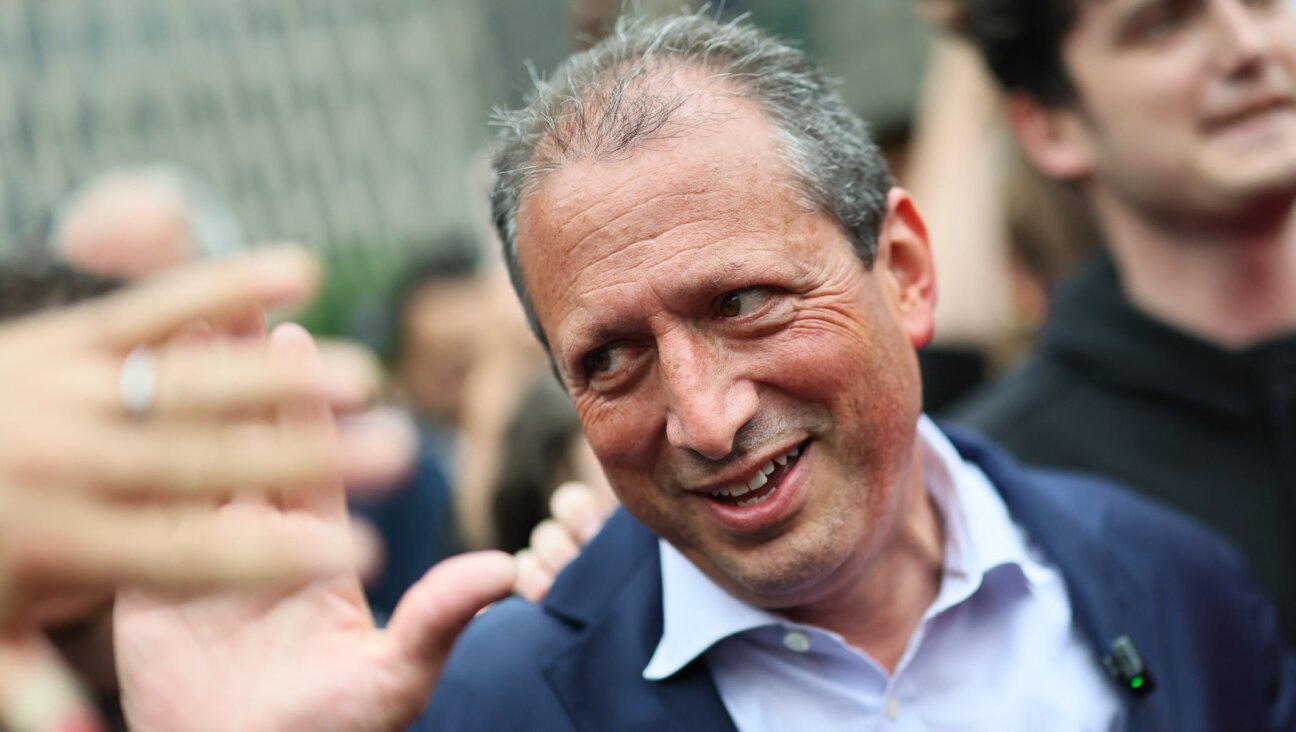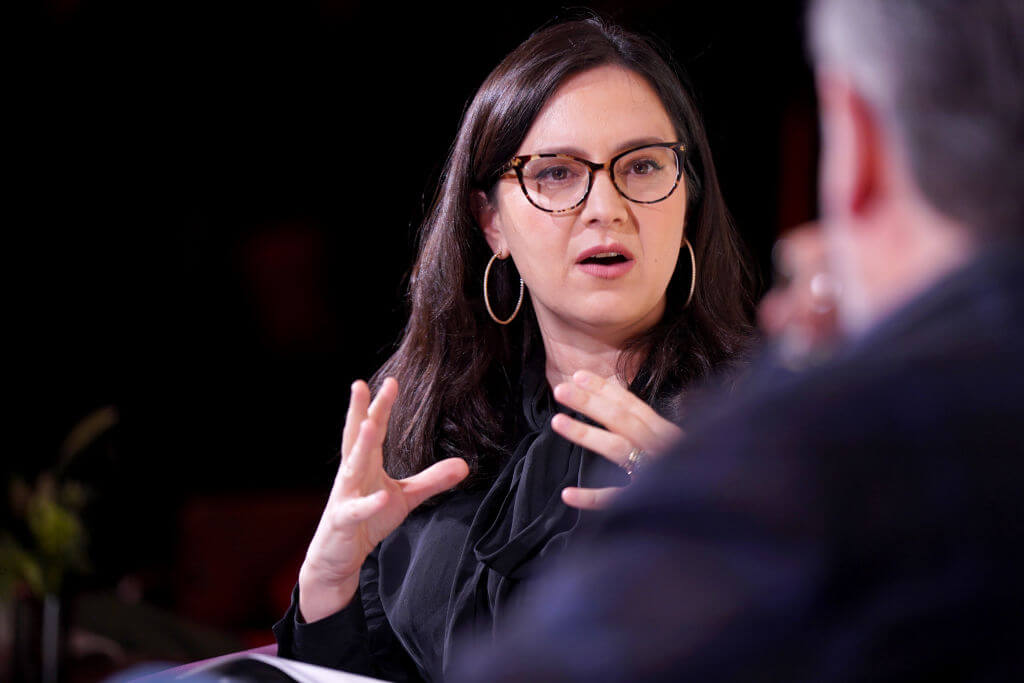Why Alberto Nisman Is No Hero for Argentina — or the Jews

Rally point: Following the killing of argentine public prosecutor Alberto Nisman on January 18, protesters took the streets with signs reading, ‘I am Nisman.’ Image by Getty Images

Exonerated: A judge said that Alberto Nisan’s charges against President Cristina Kirchner ‘lack all validity’. Image by Getty Images
It is widely believed, particularly outside Argentina, that special prosecutor Alberto Nisman died because he was about to expose a criminal pact between President Cristina Kirchner and the Iranian government to cover up the latter’s responsibility in the 1994 bombing of Buenos Aires’s Jewish community center. According to this riveting version of events, powerful forces — most likely the government he was accusing, perhaps Iran — murdered Nisman to keep him silent.
If you are one of the many people watching that movie, I have to warn you: Judge Daniel Rafecas’s flat-out dismissal of Nisman’s accusation, released February 26, is going to be quite a spoiler.
I don’t know of anyone in Argentina who considered Nisman a hero before he was found dead in his apartment on January 18. He was part of a species born and bred in my country, a specimen of the politicized federal justice system — typically, someone who stretches the law, lives beyond his means and always stands close to power. Nisman was also known among his colleagues for his close ties to Argentina’s intelligence services. The services have long been involved in political espionage, financing of political campaigns, bribing of judges and lawmakers, and every dirty operation you can imagine.
In 1997, when he first became involved in the case — known in Argentina by the JCC’s acronym, AMIA — Nisman was a young and ambitious prosecutor making a career in the newly inaugurated system of open trials.
His task was to make presentable the fabrication concocted by Judge Juan José Galeano. With forged evidence, Galeano and other authorities had accused a ring of corrupt police officers of being the “local connection” in the bombing.
The open trial began in 2001 and ended in disaster in 2004. The forgery was so apparent that it didn’t survive scrutiny. The policemen were exonerated. The judge, the prosecutors, the head of the intelligence service, a high-ranking police officer, former president Carlos Menem and the leader of the main political Jewish organization were eventually indicted for the cover-up (and are going to trial in a few months). Nisman somehow survived, and President Néstor Kirchner (Cristina Kirchner’s now late husband, who took office in 2007) appointed him as special prosecutor for the AMIA case. He had to rebuild it from scratch. In 2006, based mostly on foreign intelligence reports, Nisman accused the Iranians of sponsoring the attack, allegedly carried out by Hezbollah militants.
In the following years, the Kirchners firmly supported these allegations, accusing Iran in international forums. But in 2013, Cristina Kirchner and her foreign minister, Héctor Timerman, a prominent Argentine Jew and the son of Jacobo Timerman, a publisher revered by some as a human rights figure in the 1970s, signed a surprising memorandum of understanding with Iran.
The memorandum was intended to create an international commission of jurists to analyze the evidence provided by both countries on the AMIA case and to issue a nonbinding recommendation. Interpol had released international arrest warrants against five Iranian suspects, who remained in Iran. The main point for Argentina was that Iran would allow these suspects to be interrogated by Nisman and the new judge of the case, Rodolfo Canicoba Corral. This was considered a solution to the impasse the case had faced, because Argentine law requires that a suspect be interrogated before he can be indicted. Once the suspect is interrogated, even if he claims innocence, the judge has the power to indict and to send the case to trial. The 20th anniversary of the bombing was approaching on July 18, 2014, and the government wanted to show progress by that date.
When the agreement became public, Nisman broke ranks and repudiated it. By then he had found in the state department of the United States a more powerful ally. According to diplomatic cables made public by WikiLeaks in 2010, Nisman had sought the approval of America’s embassy in Buenos Aires before making any move in the case. When the Israeli and the American governments rejected the memorandum between Argentina and Iran, Nisman did, too.

Rally point: Following the killing of argentine public prosecutor Alberto Nisman on January 18, protesters took the streets with signs reading, ‘I am Nisman.’ Image by Getty Images
Why not wait until recess was over? Because, according to numerous testimonies, he feared the government was going to remove him from his post, as part of a larger judicial reform. (Several of those reforms were introduced December 31, and that same day, Nisman changed his return ticket from Spain.)
The first judge who received Nisman’s accusation rejected it as baseless. The Jewish leadership refused to stand by him in parliament (they started supporting him post-mortem). The victim’s relatives’ associations rejected not only the accusation, but also Nisman himself: They had been asking for his removal from the case all along.
Then, on January 18, Nisman was found dead, shot in the head with a .22-caliber bullet inside the bathroom of his locked 13th-floor apartment in the posh Puerto Madero area of Buenos Aires.
With the country in shock — half the public thinking it was murder and 77% believing that the truth about his death would never be known, according to a national poll — Nisman’s 289-page accusation was made available online. His allegations of a cover-up, it turned out, were based on two weak journalistic reports and hundreds of hours of wiretapped phone conversations between peripheral political operators aligned with the government, a criminal who tried to pass as a secret agent and the leader of the Islamic community in Buenos Aires who is also an agent of Iranian interests in Argentina.
Several of the country’s most prominent jurists agreed that there was no evidence to prove that a crime of any kind had been committed. But with demonstrators in the streets paying homage to Nisman, federal prosecutor Gerardo Pollicita picked up the case and filed the accusation again.
On February 26, Rafecas demolished it.
His 63-page dismissal is devastating: Not only was there “not even circumstantial evidence” of the alleged cover-up or obstruction of justice in Nisman’s last document, the judge wrote, but the evidence gathered by Nisman himself openly contradicted his accusations. In essence, the judge offered three points. First, since the memorandum of understanding was never actually implemented — the Iranian Parliament had not approved it, and an Argentine court ruled it unconstitutional — the alleged crime never took place.
Second, Nisman had accused Timerman of trying to cancel Interpol’s international arrest warrants against the Iranian suspects. Rafecas proved with testimonies and documents from Interpol and the Argentine Foreign Ministry that the opposite is true: Timerman was adamant that the warrants, known as “red notices,” stayed in place before and after the agreement with Iran. They still are in place. “There is not a single piece of evidence, a single trace, that supports the prosecutor’s hypothesis…. that Héctor Timerman had ever planned or prepared an attempt of a cover-up,” Rafecas wrote. “If anything becomes apparent in the wiretapped conversations (among the Iranian agents and their Argentine counterparts), it is that [(Timerman)] was the enemy to be vanquished.”
Third, the wiretapped conversations, involving people who are not public officers, could have been, at best, hints of a plan that was also never put into action — that is, the alleged trade-off of impunity for oil. Rafecas showed that there’s no trace of any real link to the Argentine government, only a lot of boasting among small-time characters.
Nisman’s criminal hypothesis, the judge concluded, “lacks all validity.”

Connected: Nisman was known for his close ties Argentina’s intelligence services. Image by Reuters
And it gets worse. Rafecas revealed that Nisman wrote contradictory submissions on the same month of his death: on one side, his explosive accusation; on the other, two documents, both with his signature and dated January 2015, in which he praised the government’s efforts to bring the Iranian suspects to justice, acknowledging that the only aim of Kirchner was to move forward with the investigation. The only thing he complained about was that, in its negotiations with Iran, the Argentine government was accepting some of Iran’s conditions instead of forcing the country to surrender the suspects. Nowhere in these two documents, which his clerks handed to Rafecas after Nisman’s death, did the prosecutor accuse the government of a cover-up.
Where does this all leave the bombing investigation? Does this mean that the Iranians are guilty or not guilty of planning or carrying out the attack? And why?
“We don’t know anything, anything, anything at all” about these questions, summed up Diana Malamud, leader of Memoria Activa, one of three organizations of AMIA’s victims’ relatives. In almost 21 years since the bombing, there have been so many hypothesis and fabrications, she added, that “if someone tells me today there was no bombing, I would consider it.”
Graciela Mochkofsky is an Argentine journalist who is the author of an acclaimed biography of Jacobo Timerman. She is currently a Prins Foundation fellow at the Center for Jewish History, in New York.















